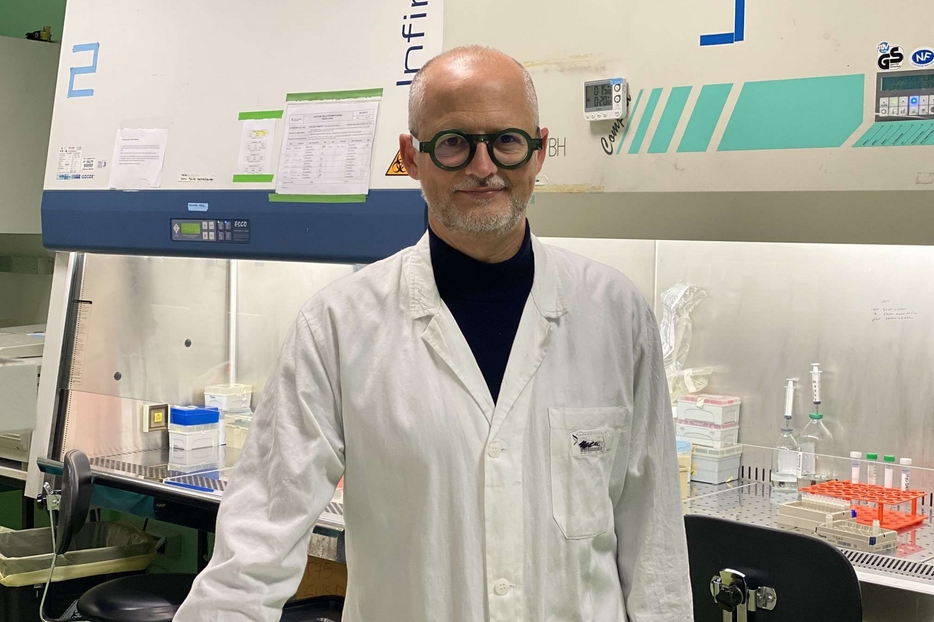Professor Lorenzo Piemonti (San Raffaele)
A new era opens in the fight against diabetes. A few weeks ago, the applications to start the first trials with cell therapies from pluripotent stem cells were submitted for evaluation by the regulatory agencies of six European countries, including Italy. These are approaches that could overcome some of the current limits of pancreatic or pancreatic islet transplants, linked to an increasingly rare availability of donors, and associated with complicated immunological aspects due to the presence, alongside the classic risk of rejection, of the risk of destruction for an “intolerance” of our organism, or from self-immunity. Clinical trials should start within the first half of 2023, once the evaluation of the regulatory bodies has been passed.
The expectations are enormous. Because, although it is not a communicable disease, diabetes is defined as an authentic “silent pandemic of the third millennium”, which develops progressively: by 2040, over 640 million people in the world will have to deal with this disease, already today among the leading causes of death. In Italy there are an estimated 300,000 people with type 1 diabetes and about 3.5 million from type 2 (only by counting the diagnosed cases) with a prevalence of 5.9% which increases with age, reaching 21% among people over 75 (Istat 2020 data). In the case of type 1 diabetes, it is an autoimmune disease, in which the immune system damages the cells of the pancreas that produce insulin, the hormone essential for the metabolism of sugars. In type 2 diabetes, however, the body produces insulin but is unable to use it properly due to complex metabolic dysfunctions.
“The research is opening completely different perspectives with respect to the techniques in use today – says Professor Lorenzo Piemonti, director of the Diabetes Research Institute and of the newly created regenerative medicine and transplantation unit of the San Raffaele hospital in Milan -. Because in type 1, but also in a fraction of subjects with type 2, we could treat the disease with “living” drugs, that is, with cells ». Until now, pancreatic islet transplants have been used whenever possible, but they «represent a“ vintage ”example of reparative or regenerative medicine. Mind you – observes Piemonti -, with pancreatic cell transplantation it was possible to cure and even cure the disease and are now considered as a standard in the guidelines of type 1 diabetes therapy for a highly selected niche of patients. But donors are few and it is impossible to do it in the absence of immunosuppression, since it is still a transplant that requires drugs to lower the immune defenses and avoid rejection ».
These two problems could be solved: «Pluripotent stem cells represent a possible solution – adds Piemonti -, because they can be produced in the laboratory in very large numbers, without depending, therefore, on the availability of a donor. Furthermore, by exploiting engineering processes that are guaranteeing good safety profiles in ongoing research (not generating tumors), we can make them invisible to the immune system, solving the problem of self-immunity and rejection, paving the way for the availability of so-called “universal donor” ».
Today in the world, the head physician resumes, “6 clinical studies are registered that use human pluripotent stem cells for the treatment of type 1 diabetes and the first patients in which they were implanted showed an evident clinical benefit”. Hence the birth of a regenerative medicine department: “These therapies – emphasizes Piemonti – require to be performed in highly specialized centers with multidisciplinary teams including professionals not normally present at the patient’s bed, such as those of biotechnologists, bioengineers, cell biologists; all indispensable because the modalities of the regenerative approach to diseases require new organizational and management models that we soon think will become a necessity for other branches of medicine. We simply try to anticipate the times a bit ». Which has always distinguished the San Raffaele. It is thanks to the research on diabetes, in fact, that the Milanese hospital was recognized for the first time as a scientific hospitalization and treatment institute in 1972, one year after its foundation; and it is precisely at the San Raffaele that, in 1989, the first transplantation of pancreatic islets in Europe was performed – that is, the transplantation of pancreatic beta cells from one or more donors -; 33 years later, in 2022, this technique entered the national guidelines of the Higher Institute of Health. Furthermore, in 2018, the hospital was one of the partners involved in the first transplant in Europe of insulin-secreting cells obtained from pluripotent stem cells. “It’s only been 4 years – concludes Piemonti – but already enough to offer new cells with superior therapeutic capabilities”.
